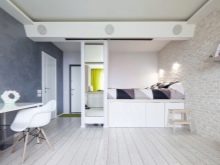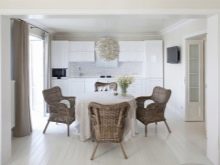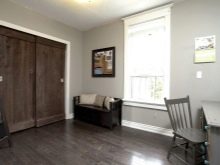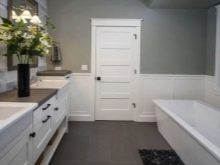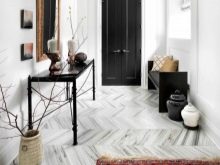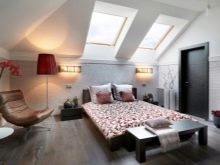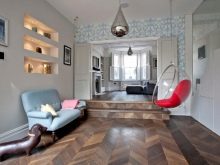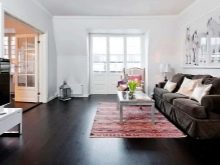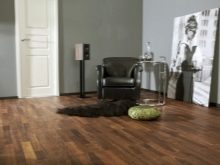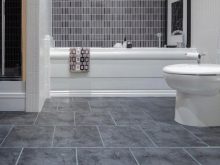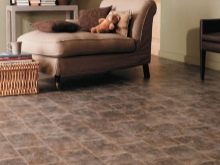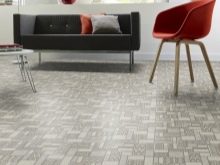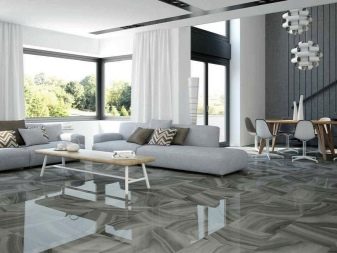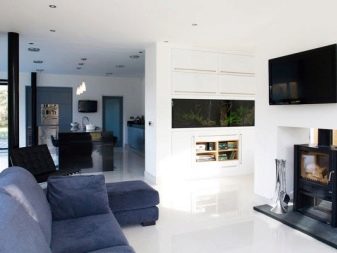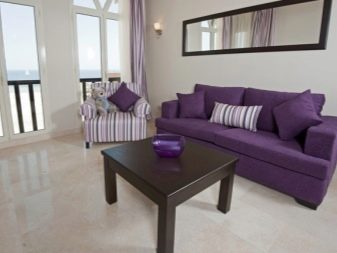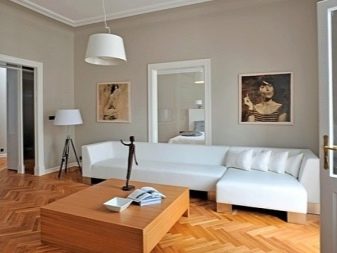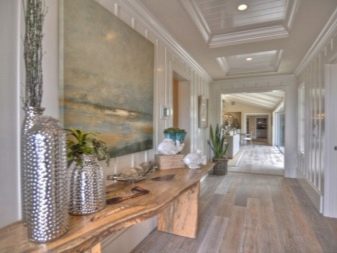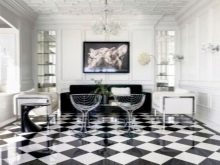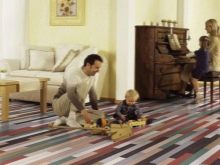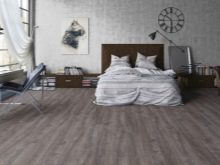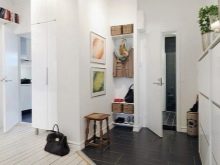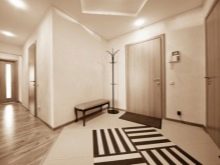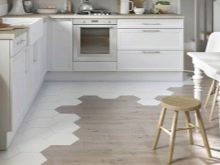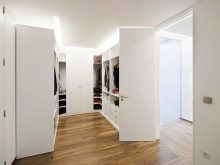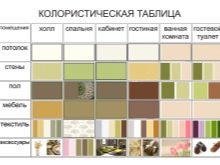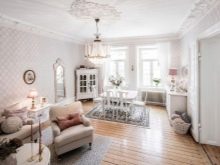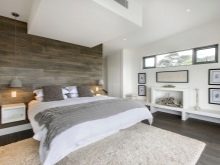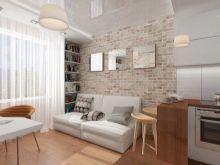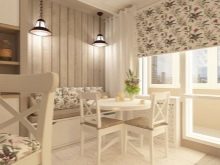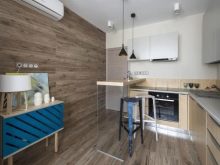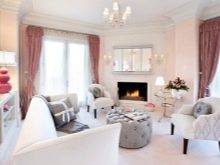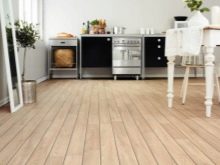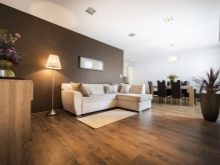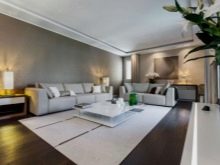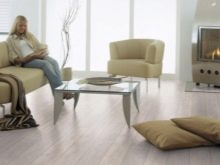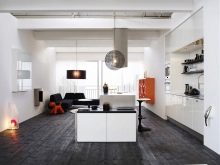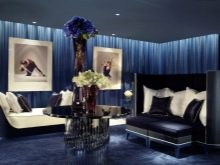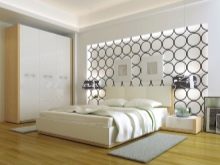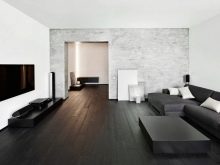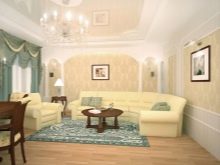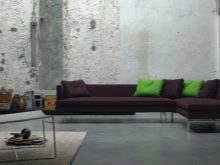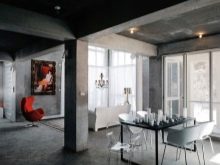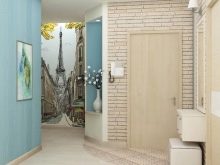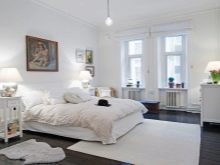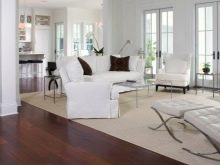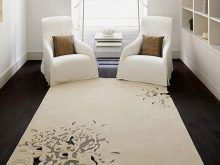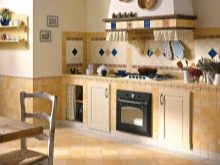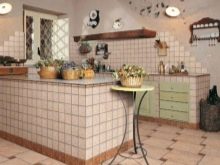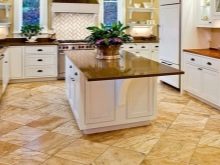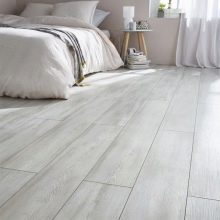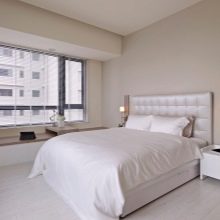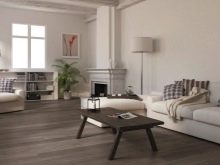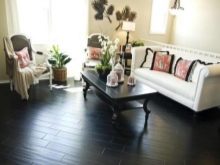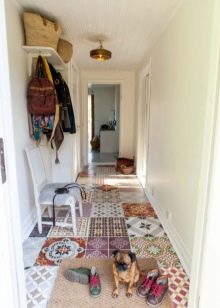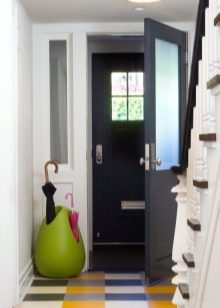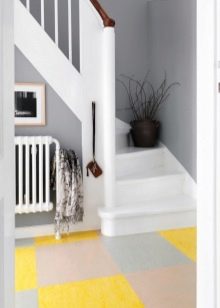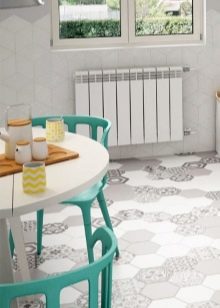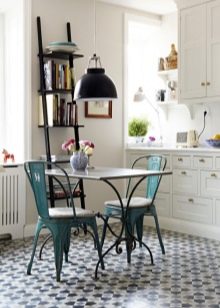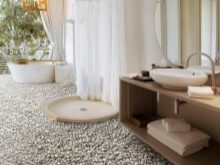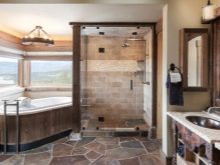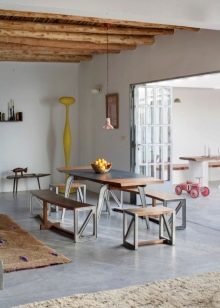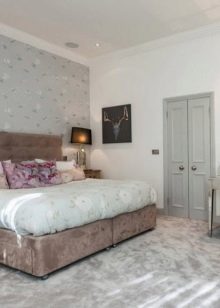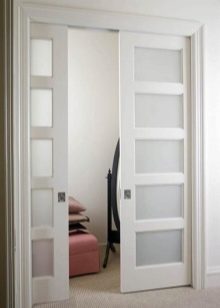Floors in the interior of the apartment: combination with doors, walls and furniture

In the arrangement of the apartment every detail of the interior composition matters. In addition to furnishing, it is important to correctly and harmoniously combine the floor covering with doors, walls and furniture - this will avoid common mistakes and visual imbalance of the room. Floors in the interior: we understand the intricacies of combinations.
Special features
The range of floor coverings on the market today is striking in its variety of texture, its properties and practicality. Today it is not difficult to get a finish that will combine functionality,practicality and aesthetics. Resistance to moisture, abrasion, mechanical damage and fading matters. Whatever the material, if it does not harmonize with the decoration of the walls, doorways and furnishing details, it risks to be a lack of interior.
In the modern approach to the decoration of any room, each design element is compared with another.
It is not only color that matters, pattern and texture - often space has constructive projections. So that they do not get out of the overall design, you need to beat this nuance, presenting it for the dignity of the room.
Features of a stylish campaign to the choice of floor cladding are in compliance with three rules:
- regardless of the material chosen, it must withstand a decent weight load without detracting from the laying technology, otherwise the surface will spoil the whole look of the apartment rooms;
- to demonstrate the premium, the material must be of status, which is done by choosing a high class corresponding to high performance characteristics;
- the floor should not repeat the dominant finish of the style,so that the room does not create the visual effect of reducing and simplifying the space: if there is a lot of the same material, this makes the atmosphere heavy.
Types of finishes
To date, the attention of buyers presented a wide range of flooring materials. Among them are many options worthy of attention, among the best include:
- parquet;
- floorboard;
- laminate;
- wooden;
- cork floor;
- bulk floor;
- vinyl;
- linoleum;
- linoleum tile;
- porcelain stoneware.
If earlier each fragment of parquet was laid out for quite a long time, today manufacturers, in addition to raw materials, offer large shields with a pattern laid out on them. For this floor use the best varieties of wood. These floors look expensive and beautiful, their design can be created through special programs, calculating the right amount of material. Floorboard It is a budget alternative to spruce or pine wood parquet, it is single-sided boards, it may have a chamfer. It can be cycled and updated many times. Laying produced on the principle of a floating floor (through locks and gluing).
Laminate It is a multilayer material that includes moisture-proof paper, fiberboard panels, moisture-proof film, decorative paper layer and acrylate (melamine) protection. In appearance, the texture resembles natural wood, although in the collections there are often varieties with a marble, leather, glossy, brick print. The wooden floor is made of pine, spruce, alder, lithenic, oak and mahogany. It is easy to install, environmentally friendly and is an interior decoration, can be painted and varnished.
Cork floor strong enough, different warm and pleasant tactile sensations, with some springiness. It is easy to mount, it is durable and good for health, as it reduces the load on the spine.
Vinyl floor, being a completely synthetic material, it is able to convey the external beauty of wood, imitates marble chips, natural stone, leather, carpet, textiles well.
Linoleum is a product of the roll type, which is simpler than the other analogues in the installation: for small areas of the rooms it is not glued to the surface.It may have a warming substrate, a different texture and pattern, while in the premium varieties it has a solid appearance.
Linoleum tile - a mosaic of linoleum fragments in the form of small squares (30 x 30 cm) or rectangles (up to 1 m). With its help, you can perform the original pattern.
Ceramic tile in the interior of the apartment is used in places with the highest maneuverability (in the kitchen, in the hallway, living room, hallway, bathroom). It is durable to mechanical damage, has a different surface texture, imitates marble, brick, natural stone, wood, decorates the surface of the floor where it is not possible to lay a carpet.
Self-leveling floor - system of surface flooding with a special solution based on polymers. Such a design solution is especially beautifully defaced if the floor surface is painted, or has a special pattern, which is applied manually with photo printing, covering it with transparent epoxy resin on top.
Colour
The color palette of floor finishes in the interior obeys the overall design background.There are no aggressive and acid paints in it: it is inappropriate even in a creative style, otherwise furniture will be lost against the general background. Conditionally The color range is divided into four main groups:
- natural wood - shades of beige, brown, including bleached oak wenge, dark wenge, oak, alder, ash, cherry, red-brown tone, American walnut;
- monochrome - white, gray, black color and their combinations;
- light tones - divorced white to blue, greyish pink, milky, light green, olive hues;
- bright - yellow, blue, red, turquoise hues, green.
One of the fashion trends is the mixture of brown and gray shades. The color of the floor covering can be monophonic and multi-colored, with mixed paints in the form of abstract transitions of shades, or a specific pattern (for example, under a wooden board, carpet, three-dimensional image, photo printing). The choice of shade depends on the specific style of the chosen design: it can be black and white contrast, light beige floor, gray mix with a wine shade.
The color solution allows you to successfully enter the flooring in the conceived idea, supporting the interior elements through color.
What should be combined?
Any floor, whatever it may be, cannot simultaneously coincide in color with the walls, doors and doorways, as well as the furniture present. The design challenge is an unobtrusive selection of objects of arrangement. Its color and texture should convey the overall mood and design idea. If a certain floor accent is planned for the style, it will match in color either with the relative tone of the furniture, or with the pattern of wall cladding, or with the tone of the doors or doorways.
Each room of the apartment uses its own type of material. This is the opinion of designers: porcelain stoneware is appropriate in the hallway, but for the bedroom it is not an appropriate option for flooring. An excellent solution is the possibility of combining some materials with each other: mixing tiles and linoleum, tiles and laminate in the hallway looks particularly interesting. This stylistic technique allows you to perform the floor decoration in the most rational way, using materials different in degree of strength in each functional area of the room, taking into account patency. This solution is convenient because it can be used to zone a space,giving it an unobtrusive organization.
Doors
The combination of the floor with the doors is created based on the specific design and preferences of the owners of the house. If the doors or doorways are made in white, the floor may not rely on this color: in this case they are repelled from the color of the general background. The same applies to the arches. When the doors do not merge with the wall, they are performed in a contrasting shade, the situation is different: not only the color, but also its temperature is taken into account.
At the same time, it is not necessary to adhere to the full hit of the floor finish with the tone of the doors and doorways: you can choose a related shade, which can differ by 2 - 3 colors from the color of the door and the opening. Designers note that this approach allows you to convey the versatility of tones, it makes the interior of the room voluminous and interesting. So you can eliminate the congestion of dark strokes, creating a heavy atmosphere in the room. Ideally, interior door openings and doors are selected in a light shade, thereby erasing the boundaries of the room, and the floor covering is chosen two shades darker.
To be sure which color is best for you, you can use specially designed tables that simplify your selection.
Walls
The list of wall finishes with which the floor is combined includes:
- wallpaper;
- laminate;
- tile;
- gypsum stucco;
- brick;
- decorative plaster.
In the case of wallpaper, floor-finishing is endless: it will look harmonious in any case, with the exception of two options:
- selection of dark wallpaper with identical color and texture of the floor finish;
- selection of identical woody tones of wallpaper and floor.
The walls should be different from the floor, they look appropriate and harmonious with the same tone of the ceiling, but in the case of hit with the color of the floor create the impression that the floor reached on the walls. This approach visually reduces the height of the walls and sets clear boundaries of the room. Experts pay attention to the fact that even the baseboard, so that the walls seemed higher, should be different from the chosen tone of the floor finish. At the same time, variations are allowed when both wall and floor facing are made in a bright range of different shades.
Looks good with a different wall covering the floor in tone wood array. Using a creative finish (brick, stone, epoxy floor), it is important to adhere to the color features of the style.Since the floor is made for a long time, it is worth making a start not from the choice of wallpaper or tile, but bear in mind accent plating (for example, the color of laminate, brick, stone insert).
Stylists recommend choosing the material in such a way that it is neutral: the wallpaper can be re-glued, and the laying is more difficult to remove - it is worth starting from its color, choosing something similar in the color of the floor.
Furniture
The combination of floor and furniture is based on the selection of furniture details. The color of the floor and furniture can not be identical. More noticeable contrasts are preferred here, and the tone of the floor should not dominate. In other words, to make the furniture look advantageous, the bright color of the floor should not be close to it in saturation.
If you want to choose dark coating, the furniture should be white or light gray: so the floor will not hide the beauty of the interior. In the extreme case, it is worth giving coziness to furniture space through carpet. Carpet today is not so popular: it is noticeably inferior to other floor materials.
For light shades greater freedom is allowed: excellent if light furniture and a similar background, slightly different in color, are chosen.It can be white and ivory, light gray and bleached wenge, white and light gray, beige and light gray. It is better to avoid combinations of identical color: against the background of the furniture, it will lose the floor and vice versa (for example, the white floor may render yellow).
If selected saturated tones flooring, it is worth adding light furniture to the interior (glass tables, metal surfaces of audio and video systems, furniture cabinets): they will highlight the sharp transition between floor and furniture tones. If a 3D effect coating is selected, the furniture may be lost on its background. It is more expedient if it will be the accent of one functional zone: this way you can distinguish both the floor and the material of the furniture.
How to choose by style?
It is not enough to buy floor cladding, choosing in color and texture: the style is important, otherwise all the works of choice will be reduced to zero. It is worth considering a few recommendations:
- for a living room of classic styles (classic, classic, neoclassical, Italian, English) it is better to choose a woody floor of warm tones;
- for modern design trends (modern, minimalism, bionics,brutalism) are preferred materials with a glossy and matte texture, while devoid of a pattern, or expressing it through the texture of a wooden board, marble, tile;
- for creative areas (loft, grunge), a coating that hints at an industrial object (linoleum, porcelain stoneware) or imitation of concrete is suitable: it is important to bring the finish to the production design;
- for ethnic (chalet, Scandinavian) design directions it is preferable to prefer light colors.
It is better to start from the room itself in the apartment: noble dark and woody tones are allowed for the living room, light colors are appropriate in the bedroom, bright colors are needed for the kitchen, neutral colors are good in the bathroom.
For rustic themes (Provence, Country) fit low-key and light colors (white, bleached wenge, light gray), boho prefers natural raw materials and color.
Beautiful combinations in the interior
Let us turn to the successful combinations of floor with wall decoration, doors and furniture:
- dark color of the floor looks great with white furniture, walls and plinth, supported by decorative pillows, softening the dark spot of the floor with a soft carpet of milky color;
- sandy-tinted porcelain stoneware is appropriate in the kitchen: with the support in wall decoration and the related shade of the tabletop, it fits harmoniously into the design without dragging your attention;
- the combination of light tones of beige and gray allows you to create a unique bedroom design: light gray floor makes expressive tones of wall cladding and furniture;
- dark color coating allows you to convey the beauty of the Chinese style and the status of white furniture: the black floor with white furniture and beige wall decoration looks spectacular;
- multicolored linoleum in the hallway is appropriate and practical: differing from the color of the walls, doors and furniture elements, it does not violate harmony;
- ceramic tiles in the kitchen, with a geometric print of soothing colors, can be successfully combined with gray-turquoise furniture, white kitchen units and walls;
- the stone floor in the bathroom looks elegant and textured: the beige color of the embossed coating is in harmony with the brown furniture, the dairy walls, the white bathroom and the sinks;
- the light gray floor and identical doors with doorways are combined with light brown furniture and white walls.
In more detail about a combination of a floor with an interior you learn from the following video.
